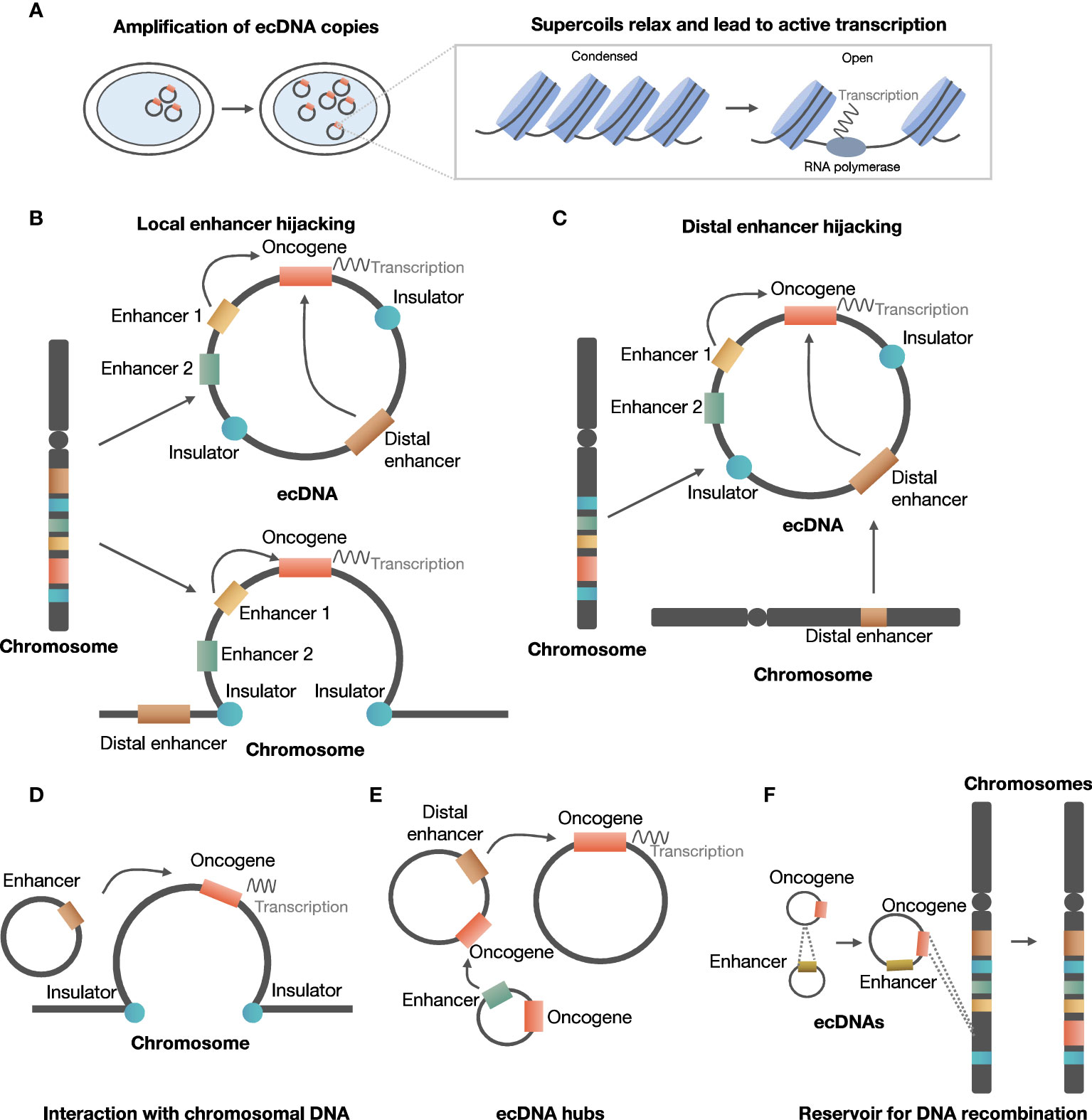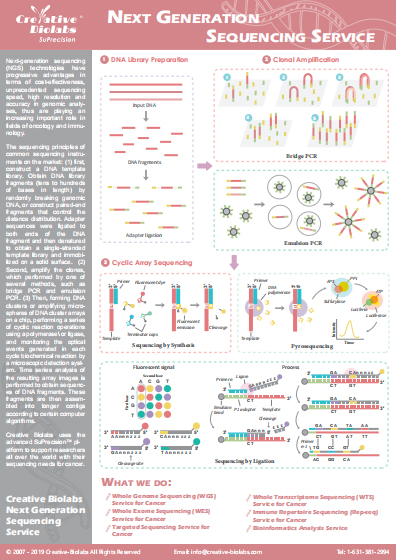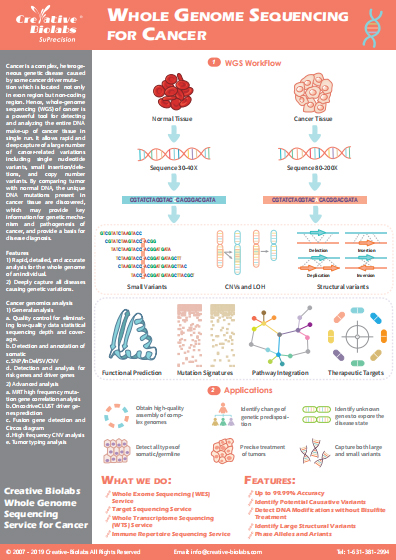
Circle-Seq based eccDNA Identification Service
Creative Biolabs has organized a staff of outstanding scientists who are proficient in providing high-quality next generation sequencing (NGS) solutions for cancer research. We provide comprehensive circle-seq services from sample preparation to reliable data delivery to help global customers to analyze and identify novel eccDNAs in tumor cells, facilitating cancer marker identification and tumorigenesis research.
Introduction of eccDNA
eccDNAs (extrachromosomal circular DNA elements) refer to extrachromosomal circular DNA that is widely present in eukaryotic cells including humans. eccDNAs are usually released or shed from the normal genome and free from the chromosomal genome. The whole genome sequence analysis of eccDNA from yeast, nematodes, ciliates and mammals found that the size of eccDNA ranges from dozens of bases to hundreds of thousands of base pairs. eccDNAs not only carry complete or partial genes, but also harbor intergenic sequences, and part of it contains the initiation point of replication, which can complete replication independently. In many human tumor cells, a large amount of extrachromosomal circular DNAs have been detected. Recently, a study reported the major oncogene transcripts were directly derived from eccDNAs. The eccDNA chromatin is highly open and can express large amounts of oncogenes. At the same time, it lacks centromeres and cannot follow Mendelian laws of inheritance. This feature makes eccDNA an important mechanism for driving tumor heterogeneity. Thus it can be seen eccDNA can not only be used as a novel and specific tumor marker, but also play a significant potential value in the study of the mechanism of tumor occurrence and development. It is foreseeable that eccDNA will quickly become a new research hotspot, and will even bring a revolutionary impact on traditional genetics and genomics.
 Fig.1 The roles of ecDNA in cancer.1
Fig.1 The roles of ecDNA in cancer.1
Our Capacibility
Creative Biolabs’ eccDNA sequencing service (also known as Circle-seq, circular DNA sequencing) uses a variety of methods to efficiently enrich and amplify eccDNA, which greatly improves the detection rate of eccDNA. After enrichment, NGS sequencing is used to detect all eccDNA molecules in the cell with high throughput. And through the rigorous eccDNA bioinformatics analysis process, accurate identification of eccDNA and detailed gene annotation are realized.
 Fig.2 Workflow of eccDNA sequencing.
Fig.2 Workflow of eccDNA sequencing.
Highlights
- One-stop service: we provide the entire service process of eccDNA enrichment, library preparation, Circle-seq to data analysis for you.
- High detection rate of eccDNA: a variety of powerful methods are used to efficiently enrich and detect eccDNA.
- Professional bioinformatics analysis: our professional bioinformatics team has developed an algorithm for high-efficiency identification and analysis of eccDNA to meet various in-depth data analysis needs of customers.
Sample Requirement
- Sample Type
- Sample size
- Cell: ~2×107
- Tissue: ~100 mg
- DNA: ≥10 µg, dissolved in sterile water or TE (pH=8); OD 260/280=1.7~2.0; RNA should be removed and no other individuals or DNA contamination of other species.
- Sample transportation and storage
- The sample should be place in a 1.5mL Eppendorf tube, sealed with a parafilm, and transported on dry ice. DNA can be transported in an ice bag.
- Cell samples or fresh tissue pieces were cut and frozen in liquid nitrogen at -80℃. DNA samples can be -20℃ in a short period of time to avoid repeated freezing and thawing.
Cells, tissues, genomic DNA. Please inquire for other types of samples.
If you are interested in our services, please feel free to contact us for more details.
Q&As
Reference
- Dong, Yucheng, et al. "Extrachromosomal DNA (ecDNA) in cancer: mechanisms, functions, and clinical implications."Frontiers in oncology 13 (2023): 1194405. Distributed under open access license CC BY 4.0, without modification.
Resources
Infographics
Podcast
- TMB Analysis for Checkpoint Immunotherapy Response
- WES based Variant Analysis
- WES based Structural Variant Detection
- WES based CNV Detection
- WES based Tumor-Specific Neoantigen Discovery
- WES based Biomarker Discovery
- Personal Tumor-Specific Neoantigen Vaccine Development
- MRD Monitoring
- Microsatellite Instability Analysis
- Immune Repertoire Germline Gene & Allele Identification
- One-Stop Cancer 3D Modeling
- RNA-Seq based Tumor Microenvironment Analysis




